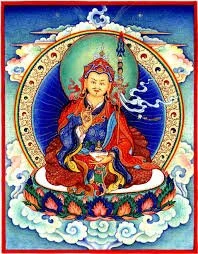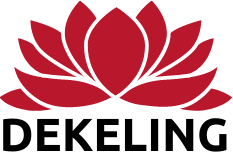 Image 1 of 1
Image 1 of 1


Ngöndro Series
Ngöndro, the “extraordinary preliminaries,” are called preliminary not because they are brief or easy, but because they lay the ground for all that follows in the Varjayana. They prepare the body, mind and heart for practice, clear obstacles, and help the student gather the causes for realization.
Each section of Ngöndro works directly with the habits and tendencies that bind us to confusion. With steady practice, obscurations are worked through and the natural clarity of mind is uncovered. Many masters of the past have relied on Ngöndro as a complete path to awakening.
Why Do Ngöndro?
Traditionally, Ngöndro is a pre-requisite for most yidam practices and often for three-year retreat. The complete set of all four practices is a powerful commitment and brings immediate and longer-term benefits to a life of practice.
What’s Involved?
Ngöndro includes:
1. Refuge and Prostrations – bringing body, speech, and mind into alignment with the path and a life centered on practice.
2. Vajrasattva Mantra Recitation – purifying karmic traces and habitual patterns.
3. Mandala Offering – offering everything, and the cultivation of the spirit of universal generosity.
4. Guru Yoga – devotional practice that clarifies what the guru actually is and creates the causes of deeper understanding and blessing in practice.
All four practices are preceded by deep practice in ‘common preliminaries,’ the Four Thoughts That Turn the Mind to Dharma: precious human life, impermanence, karma, and the suffering of cyclic existence.
Ngöndro at Dekeling
Ngöndro is a great undertaking, and for the committed student, practicing with community can make this path of practice more steady and joyful. So our approach includes:
- Group Practice: Meetings where Ngöndro students practice together and offer each other on-going support.
- Traditional Teachings: Clear instructions, rooted in the transmission of our Tibetan teachers.
- Support Materials: Texts, recordings, and images are sourced and shared.
- Personal Guidance: Opportunities for individual support and guidance from our Teacher and our Lama.
- Respect for Pace: Each person moves at a sustainable rhythm that supports completing the cycle in a way that honors commitment, and is wholesome for family and other relationships.
Pre-requisites
Students interested in guidance for Ngöndro must have been actively practicing at Dekeling for more than one year, or have permission from their Dekleing guiding teacher. It will be helpful to have completed one of our full paths of practice, like Vajra Heart or the Buddhist Practitioner’s Program, but if you have done similar work elsewhere, it may be possible to begin your Ngöndro here. We encourage a minimum of one-year commitment to the exploration of this practice.
2026 Ngöndro: Vajrasattva Practice : 10.17.25
Vajrasattva practice is a powerful way to purify body, speech and mind from confusion and previous harmful actions. Our traditional approach uses recitation of liturgy, visualizations, and mantra recitation, as well as extending the practice beyond formal mediation to daily life.
2026 Ngöndro: Mandala Practice : 10.24.25
In Mandala practice, we learn to open to abundance and generosity in all its forms. This contributes to selflessness, reduces grasping, and creates further foundation for the awakening of heart and mind, using liturgy, visualizations, and chanting to ritually create and offer over 100,000 visualized ‘universes’ of precious environments and objects. Like all the ngöndro practices, mandala practice is concurrently extended to daily life.
2026 Ngöndro: Guru Yoga Practice : Date TBD
The student of guru yoga practice uses the same methods as in the previous three, but with different liturgy, visualizations and recitations. Guidance at this stage is more individual as the student connects to the teachers, teachings and mind itself as they complete ngöndro and make a traditional feast offering to the community in celebration.
Ngöndro, the “extraordinary preliminaries,” are called preliminary not because they are brief or easy, but because they lay the ground for all that follows in the Varjayana. They prepare the body, mind and heart for practice, clear obstacles, and help the student gather the causes for realization.
Each section of Ngöndro works directly with the habits and tendencies that bind us to confusion. With steady practice, obscurations are worked through and the natural clarity of mind is uncovered. Many masters of the past have relied on Ngöndro as a complete path to awakening.
Why Do Ngöndro?
Traditionally, Ngöndro is a pre-requisite for most yidam practices and often for three-year retreat. The complete set of all four practices is a powerful commitment and brings immediate and longer-term benefits to a life of practice.
What’s Involved?
Ngöndro includes:
1. Refuge and Prostrations – bringing body, speech, and mind into alignment with the path and a life centered on practice.
2. Vajrasattva Mantra Recitation – purifying karmic traces and habitual patterns.
3. Mandala Offering – offering everything, and the cultivation of the spirit of universal generosity.
4. Guru Yoga – devotional practice that clarifies what the guru actually is and creates the causes of deeper understanding and blessing in practice.
All four practices are preceded by deep practice in ‘common preliminaries,’ the Four Thoughts That Turn the Mind to Dharma: precious human life, impermanence, karma, and the suffering of cyclic existence.
Ngöndro at Dekeling
Ngöndro is a great undertaking, and for the committed student, practicing with community can make this path of practice more steady and joyful. So our approach includes:
- Group Practice: Meetings where Ngöndro students practice together and offer each other on-going support.
- Traditional Teachings: Clear instructions, rooted in the transmission of our Tibetan teachers.
- Support Materials: Texts, recordings, and images are sourced and shared.
- Personal Guidance: Opportunities for individual support and guidance from our Teacher and our Lama.
- Respect for Pace: Each person moves at a sustainable rhythm that supports completing the cycle in a way that honors commitment, and is wholesome for family and other relationships.
Pre-requisites
Students interested in guidance for Ngöndro must have been actively practicing at Dekeling for more than one year, or have permission from their Dekleing guiding teacher. It will be helpful to have completed one of our full paths of practice, like Vajra Heart or the Buddhist Practitioner’s Program, but if you have done similar work elsewhere, it may be possible to begin your Ngöndro here. We encourage a minimum of one-year commitment to the exploration of this practice.
2026 Ngöndro: Vajrasattva Practice : 10.17.25
Vajrasattva practice is a powerful way to purify body, speech and mind from confusion and previous harmful actions. Our traditional approach uses recitation of liturgy, visualizations, and mantra recitation, as well as extending the practice beyond formal mediation to daily life.
2026 Ngöndro: Mandala Practice : 10.24.25
In Mandala practice, we learn to open to abundance and generosity in all its forms. This contributes to selflessness, reduces grasping, and creates further foundation for the awakening of heart and mind, using liturgy, visualizations, and chanting to ritually create and offer over 100,000 visualized ‘universes’ of precious environments and objects. Like all the ngöndro practices, mandala practice is concurrently extended to daily life.
2026 Ngöndro: Guru Yoga Practice : Date TBD
The student of guru yoga practice uses the same methods as in the previous three, but with different liturgy, visualizations and recitations. Guidance at this stage is more individual as the student connects to the teachers, teachings and mind itself as they complete ngöndro and make a traditional feast offering to the community in celebration.

